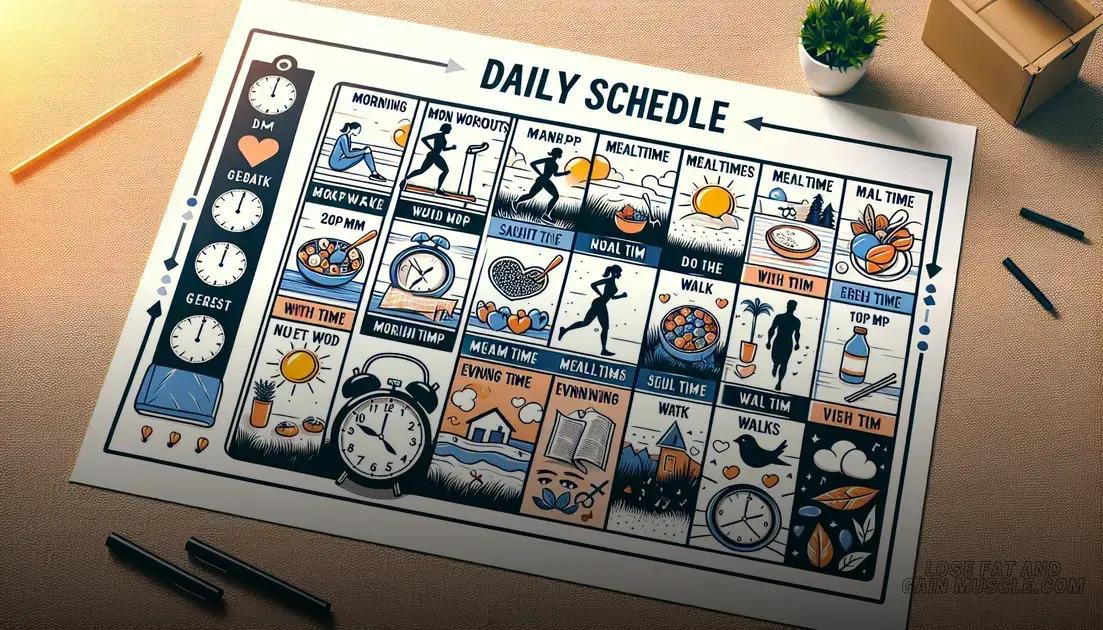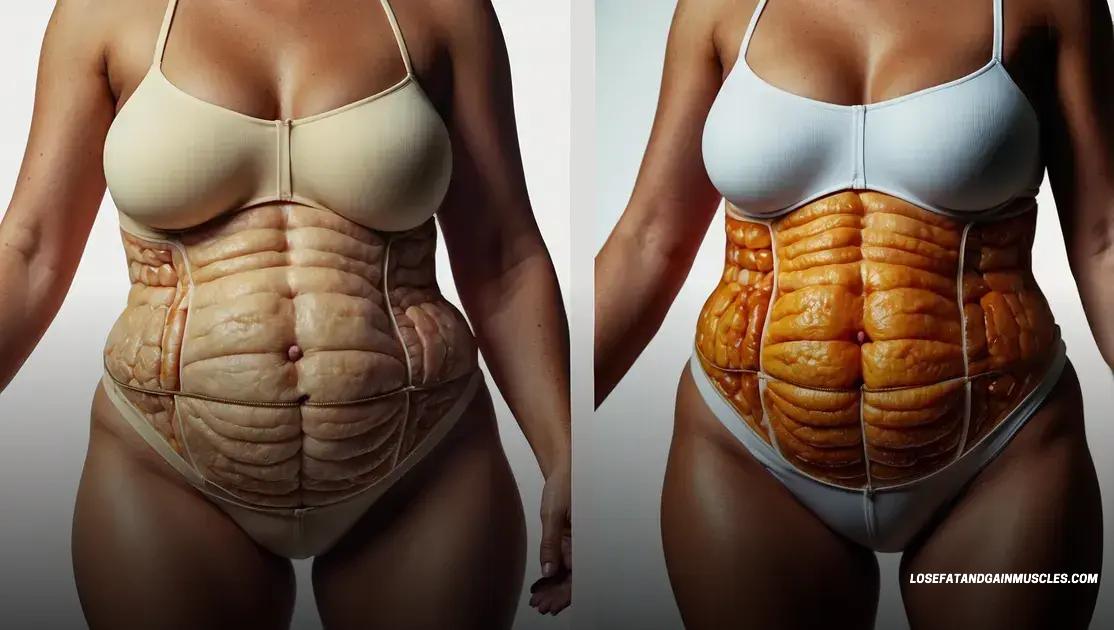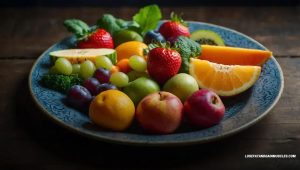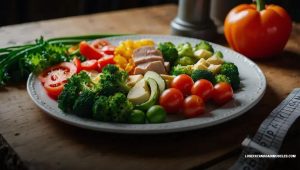How to Burn 1000 Calories a Day? 6 Effective Tips to Help You
To burn 1000 calories a day, combine effective exercises like running and cycling with a balanced diet. Maintain motivation through goal-setting, tracking progress, and rewarding achievements, while ensuring to stay active throughout your daily routine.
If you’ve ever wondered how to burn 1000 calories a day, you’re not alone. Many fitness enthusiasts seek effective ways to enhance their workouts and achieve their caloric goals. Burning this amount of calories daily can significantly contribute to weight loss, improve overall health, and boost energy levels. In this article, we’ll explore practical tips, exercises, and nutritional strategies to help you reach this ambitious target while maintaining a balanced lifestyle.
Understanding Caloric Burn
To effectively understand caloric burn, we first need to grasp what a calorie is. A calorie is a unit of energy that our bodies use to function. Every activity we engage in, from breathing to exercising, requires energy, which translates to calories burned.
How Caloric Burn Works
When we consume food, our bodies convert it into energy. This energy is utilized for various functions such as maintaining body temperature, supporting muscle movement, and powering our organs. The total calories we burn can be divided into three main categories:
- Basal Metabolic Rate (BMR): This is the energy your body needs to maintain basic physiological functions at rest. BMR accounts for roughly 60-75% of your total daily caloric burn.
- Physical Activity: This includes all movements, from walking and exercising to household chores. The calories burned during physical activity can vary greatly based on type and intensity.
- Thermic Effect of Food (TEF): This refers to the energy used to digest and process the food you eat. It typically accounts for about 10% of your daily caloric burn.
Factors Affecting Caloric Burn
Several factors influence how many calories you burn each day:
- Age: As we age, our BMR generally decreases, meaning fewer calories are burned at rest.
- Gender: Males usually have a higher BMR than females due to a greater proportion of muscle mass.
- Body Composition: The more muscle mass you have, the more calories you burn, even at rest. This is due to muscle being metabolically active compared to fat.
- Activity Level: The more active you are, the more calories you burn. Engaging in regular exercise can significantly boost your caloric expenditure.
By understanding these components and factors, you can better strategize how to burn those 1000 calories a day!
Effective Exercises to Burn 1000 Calories

To effectively burn 1000 calories, it’s crucial to engage in high-intensity exercises that elevate your heart rate. Here are some effective exercises you can incorporate into your routine:
Running
Running is one of the most efficient ways to burn calories. A 155-pound person burns about 660 calories per hour while running at a speed of 5 mph. Increasing your pace to 7.5 mph can burn approximately 990 calories in the same amount of time.
Cycling
Cycling is another excellent way to torch calories. Whether you’re cycling on a stationary bike or outdoors, an hour of vigorous cycling can burn around 600-900 calories. To maximize your burn, try to maintain a faster pace or tackle hilly terrain.
Swimming
Swimming is a full-body workout that is both fun and effective. Depending on the intensity and style, swimming can burn up to 700 calories per hour. Combining different strokes can help you achieve even higher calorie burn.
High-Intensity Interval Training (HIIT)
HIIT alternates between short bursts of intense exercise and rest or low-intensity periods. A 30-minute HIIT workout can burn between 400-600 calories. These workouts are efficient and can be tailored to fit any fitness level.
Rowing
Rowing is a fantastic full-body workout that builds strength and endurance. One hour of vigorous rowing can burn around 600-800 calories. Using a rowing machine at the gym is an excellent way to get started.
Jumping Rope
Jumping rope is an effective cardiovascular workout that can burn approximately 600-800 calories per hour. It’s a quick and convenient exercise that you can perform almost anywhere.
Incorporating these exercises into your weekly fitness routine can help you reach your goal of burning 1000 calories a day. It’s important to find activities that you enjoy to stay motivated and consistent.
Importance of Nutrition in Caloric Burn
Nutrition plays a crucial role in caloric burn and overall health. What you eat directly impacts your body’s ability to burn calories efficiently. Here are some key points about the importance of nutrition:
Fueling Your Body
To burn calories efficiently, your body needs the right fuel. Consuming a balanced diet rich in carbohydrates, proteins, and healthy fats can help enhance your metabolism. Carbohydrates provide the energy you need for intense workouts, while proteins help build and repair muscles.
The Role of Macronutrients
Each macronutrient contributes differently to caloric burn:
- Carbohydrates: These are the body’s primary energy source. Eating complex carbs from whole grains, fruits, and vegetables can improve performance and endurance.
- Proteins: Consuming enough protein is vital for muscle recovery and growth. Boosting your muscle mass can increase your resting metabolic rate, which means you burn more calories at rest.
- Fats: Healthy fats, like those found in avocados and nuts, are important for overall health. They help with hormone production, which can influence your metabolism.
Hydration Matters
Staying hydrated is essential for metabolic processes. Drinking water can temporarily boost your metabolism. Moreover, hydration supports physical performance, allowing you to exercise longer and burn more calories.
Metabolic Rate and Meal Timing
Your metabolic rate can be influenced by meal timing. Eating smaller, more frequent meals can help maintain energy levels and prevent overeating. This strategy may also help keep your metabolism active throughout the day.
Importance of Micronutrients
Vitamins and minerals play supportive roles in your metabolism. Nutrients like B vitamins and magnesium are essential for energy production. Ensuring you get all necessary micronutrients helps the body function optimally.
By making informed nutritional choices, you can maximize your caloric burn and reach your fitness goals more effectively. Remember that nutrition and exercise work hand-in-hand for the best results.
Daily Schedule for Burning Calories

Creating a structured daily schedule can significantly help you in burning calories effectively. Here’s a sample schedule to guide you:
Morning Routine
- 7:00 AM: Wake up and drink a glass of water to kickstart your metabolism.
- 7:30 AM: Engage in a 30-minute morning workout. This can be a brisk walk, jogging, or an online HIIT session.
- 8:00 AM: Have a healthy breakfast including protein, complex carbohydrates, and healthy fats.
Mid-Morning Activity
- 10:00 AM: Take a 10-minute break to stretch or walk around your home or office. This helps keep your energy up.
Lunch Break
- 12:30 PM: Enjoy a balanced lunch that includes vegetables and lean protein.
- 1:00 PM: After eating, take a brisk 15-minute walk to aid digestion and burn extra calories.
Afternoon Exercise
- 3:00 PM: Schedule a 30-minute workout session. This could be cycling, swimming, or a gym class.
Evening Activities
- 5:30 PM: Go for a walk with friends or family for about 30 minutes. Make it enjoyable to keep motivation high.
- 7:00 PM: Have a healthy dinner focusing on vegetables and lean meat. Avoid heavy carbs.
Pre-Bedtime Routine
- 8:30 PM: Engage in light stretching or yoga for 15 minutes to relax and unwind.
- 9:00 PM: Start winding down and prepare for a good night’s sleep.
Adjust the timing based on your personal preferences and commitments. Staying active throughout your day while ensuring proper nutrition can help you effectively burn calories.
Tracking Your Progress
Tracking your progress is vital to reaching your goal of burning 1000 calories a day. It helps you understand what works and what needs adjusting. Here are some effective methods to monitor your progress:
Set Clear Goals
Start by defining your calorie burn goals. Set daily, weekly, and monthly calorie targets. Using specific numbers can give you a clear target to aim for.
Use a Fitness Tracker
Invest in a fitness tracker or smartwatch. These devices can provide real-time data on your activity levels and the calories you burn throughout the day. Many trackers allow you to log workouts and meals, making it easier to see your overall progress.
Maintain a Food Diary
Keeping a food diary can be helpful. Write down everything you eat and drink along with the calorie counts. This helps you to see how your nutrition impacts your total caloric burn. Apps like MyFitnessPal can make this easier.
Log Your Workouts
Document your workouts to review later. Note the type of exercise, duration, and estimated calories burned. This can motivate you to push harder or try different workouts.
Weigh Yourself Regularly
Track your weight weekly to see trends over time. It’s important to weigh yourself under consistent conditions, like the same time of day, to get accurate readings.
Assess Progress Periodically
Set aside time every month to assess your progress. Look at how much you’ve improved in terms of endurance, strength, and weight changes. Adjust your goals and routines based on this assessment.
By regularly tracking your progress, you can stay motivated and make necessary changes to ensure you burn those 1000 calories each day!
Staying Motivated to Reach Your Goals

Staying motivated can be challenging, especially when aiming to burn 1000 calories a day. Here are some effective strategies to keep you inspired and on track:
Set Achievable Goals
Start with small, realistic goals that lead to your larger target. Celebrate each achievement to build confidence and maintain motivation. For example, aim to burn an additional 200 calories each week.
Create a Workout Plan
Design a workout plan that includes different activities you enjoy. Mixing things up can keep workouts exciting and help reduce burnout. Include both cardiovascular and strength training sessions.
Find a Workout Buddy
Working out with a friend can make exercising more fun and accountable. You can encourage each other to push through tough workouts and share progress, making the journey enjoyable.
Track Your Progress
Keep a journal or use a fitness app to log your daily activities and calorie burn. Seeing your progress can provide motivation and remind you of how far you’ve come.
Reward Yourself
Set rewards for reaching your goals. Treat yourself to a massage, new workout gear, or a fun outing when you achieve a milestone. Rewards create positive reinforcements for your efforts.
Stay Inspired
Follow fitness influencers or read success stories of others who have achieved similar goals. Inspirational content can ignite your passion and reinforce your commitment to burning calories.
By implementing these strategies, you can stay motivated and on track to reach your goal of burning 1000 calories a day. Remember, the journey is just as important as the destination!
Achieving Your Goal of Burning 1000 Calories a Day
Burning 1000 calories a day is an ambitious yet achievable goal with the right strategies in place. By understanding caloric burn, incorporating effective exercises, and prioritizing nutrition, you can significantly improve your fitness levels.
Additionally, implementing a daily schedule and tracking your progress are essential steps in this journey. Staying motivated through goal-setting, workout buddies, and rewards will help keep you on track.
Remember that consistency is key, and by following these effective tips, you can not only accomplish your calorie-burning goals but also enhance your overall health and well-being. Embrace the journey, and celebrate your successes along the way!
FAQ – Frequently Asked Questions About Burning 1000 Calories a Day
What are the most effective exercises to burn 1000 calories?
Effective exercises include running, cycling, swimming, HIIT workouts, and rowing. Choose activities that you enjoy to stay motivated.
How important is nutrition in burning calories?
Nutrition is crucial as it fuels your body for workouts and influences your metabolism. A balanced diet with the right macronutrients enhances caloric burn.
How can I stay motivated to reach my calorie-burning goals?
Set achievable goals, track your progress, reward yourself for milestones, and find a workout buddy to keep you motivated and accountable.
How do I track my progress effectively?
Use fitness trackers, maintain a food diary, log your workouts, and weigh yourself regularly to assess trends and adjust your plan.
Can I really burn 1000 calories in a day?
Yes, with a combination of regular exercise, careful planning, and a balanced diet, burning 1000 calories a day is achievable for many individuals.
What is a good daily schedule for burning calories?
Create a schedule that includes morning workouts, mid-morning stretching, lunch breaks with light exercises, and evening walks to stay active throughout the day.













